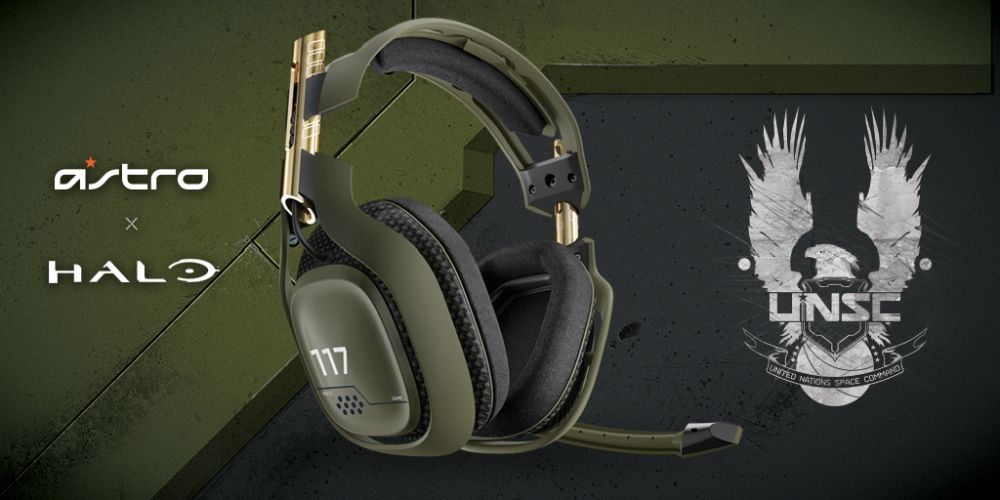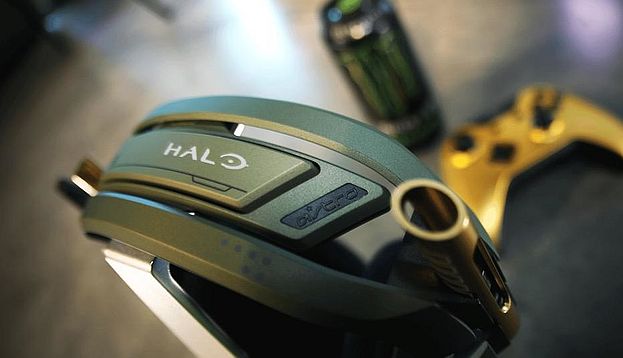The accessories market is expanding as new consoles notch ever-higher sales, but it’s more competitive than ever. One brand that’s had years of success in the audio accessory market is Astro Gaming, known for its iconic A40 and A50 headsets that are widely desired by eSports professionals and hardcore gamers alike. Astro Gaming sees itself as more than just a hardware maker, though, taking a more expansive view. From the company’s web site: “Our company lives at the epicenter of technology, lifestyle and design… now that video gaming has become a leading form of entertainment, with “gaming lifestyle” quickly taking root, we decided to leverage our experience and give people an authentic gaming brand to rally around at the heart of this culture.”
Astro Gaming’s partnership with Microsoft has resulted in the A50 Halo Edition headset, and the two companies have more plans in the works as Halo 5 comes to market later this year. Astro Gaming vice president of marketing Aron Drayer spoke with [a]listdaily about working with such an iconic brand as Halo, and how the company delivers high-end products to the dedicated gamers.
 Aron Drayer
Aron Drayer
You released a branded Halo A50 headset last Christmas. How has this done for you, and why did you choose to create this product?
The Halo headset has done really well — it did much better than we thought it was going to. I think it speaks to how we think about brands and branding. It’s not tied to any one game. We license franchises, not games. That’s a great philosophy that’s worked well for us. As we thought about that product, Master Chief is so iconic this is a great way to celebrate him as a character and give Halo fans what they want in terms of finishes and materials, but do something classy and restrained enough that it wouldn’t seem like it was just something that had giant Halo logos slapped all over it. If you look at the product, there’s really only only one Halo logo on this product, right here at the top. Yet you would look at this from any angle and immediately know it was tied to Halo.
I think that’s really critical to the way we’ve treated these brands and these partnerships, we’ve tried to really deal with them in the way we think our consumer wants. If you’re going to spend $300 on this then you don’t want something that has logos covering it, and it feels like it’s tied to a certain moment in time. Master Chief is a timeless game character that’s going to live in people’s imaginations for a very long time, and obviously is a part of Halo 5 this year too. That’s really who we’re trying to play to, the lifelong fan of Halo, the brand and the franchise.
This headset at $300 has to be one of the most expensive items you can get as a Halo fan. Did you have any worries about producing such an expensive licensed item?
If you were to look at NPD data, you would never think that a $300 licensed product would be successful. Most of the licensed products that succeed in the headset space tend to be at $99 and below, and they are very opportunistic. I think it’s indicative of the way we think as a brand an a company. We see gaming as a part of people’s lives, and we’re trying to figure out how to represent that part of their lifestyle. We’re not just trying to throw a logo on a product and sell as many as we can to them. We’re trying to do it in a tasteful way that is really going to appeal to the fans of these games. Because that’s the way we think — if we didn’t all like this at Astro, then it wouldn’t get made. We need to be fans of this too.
What was it like working with Microsoft on this licensed product?
When you can have both a high quality product and a high quality representing the brand, you’re really winning. A lot of credit to the Halo team at Microsoft and the 343 team to buying into that philosophy also. We went to them and said ‘We want this to be about the franchise. We want this to be a celebration of the brand, we don’t want it to be tied to one title or one moment in time, and obviously with Master Chief Collection and other things they were doing it made sense. So it really came together very nicely. They are very good partners, extremely supportive, very collaborative, and I think you’ll see just how collaborative when we get to Gamescom.

What’s the profile of the customers you are aiming at with Astro Gaming products?
We really think about the use case. Who is this person, how are they using the product, where are they using the product. We know that we have one consumer that is an elite older consumer, we call our prosumer. They’re in their 30s, they grew up gaming. They just want best in class products and best in class experiences across anything they’re doing. They’re driving Audis, not VWs. They’re buying Nikes, not Reeboks — no offense to Reebok or VW. They want the best. Part of it is prestige, part of it is performance, part of it is they think it fits their lifestyle better. A lot of times that guy is older, they’re probably more affluent but they also don’t have as much time to put into gaming every day. So when they are gaming, they want it all to work perfectly, they want an easy experience, and one that sounds incredible and feels great. So when they finally get the kid to bed and have an hour to play Call of Duty, it’s the best possible experience it can be. That’s who buys our A50.
We market to two very specific people. We market to that guy, and we market to the pro, aspiring pro, and livestreamer. That’s our other audience — that’s the guy who’s using an A40. They’re typically sitting at a desk, where our prosumer is sitting on a couch. They’re in a desktop environment, they have a streaming setup, they have a computer plugged in, and usually multiple screens. Because of their proximity to the screen and their whole setup they typically want a wired product, not a wireless product.
As you construct your marketing strategy for Halo-related products, what are the important touch points for you to reach your customers?
That’s a good question. I think it all does stem from online muliplayer to some degree, I think that’s what really drives headset usage. Yes, it’s great playing a single-player game with one of our headsets, too, but it’s the voice communication and the full experience of playing an online game that drives somebody into this kind of price point product. I think we’ll be leaning really heavily on what they’re doing in online multiplayer, and really trying to feature that part of it.
Obviously we expect that’s going to extend into eSports as well, so we’ll be heavily integrated, hopefully, into whatever kind of eSports plans that they have. This has been a great year for HCS already, and I would expect, looking ahead to Halo 5, that they’re really going to try to feature that and push that part of the game as much as they can. The community’s really come back around and has been really responsive to the Master Chief Collection, and I really think this is going to give that community another thing to rally around and have fun with. Those are going to be things that help us drive headsets.

